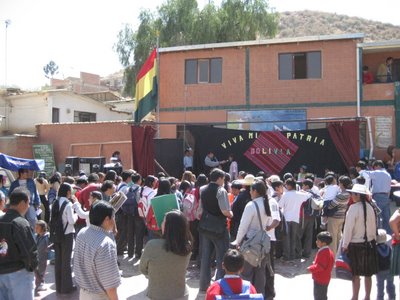NURSING A BLOODY NOSE ANDCHEWING COCA LEAVES IN UYUNNI
The first stop on my journey was
Cochabamba, Bolivia.
Cochabamba is the 3
rd largest city in the poorest nation in South American.
I chose
Cochabamba because my friend Rebecca Kirchheimer was the second in command at the
Foundation for Sustainable Development there .
I lived as her roommate for the month of August and left the city for an excursion to Uyuni, where I saw enormous salt flats and to Inca ruins at Incacallacta.
It certainly took my body some time to adjust to the high altitude and dry air.
I got headaches and nose bleeds every day when I first arrived. As the locals do, I tried drinking Coca tea and chewed on Coca leaves to alleviate the symptoms.
DALI
Living abroad made me think about what it means to be American. After losing at a Bolivian dice game one night at Dalí, a Bolivian friend of mine beat me at poker. Losing at an American game irked me. After salsa lessons with some European friends of mine from my Spanish school, we all went bowling. At the bowling alley, I did a better job of representing my country.
At bowling, I was the only one who cheered vociferously when people got strikes and
I got a higher score than anybody else. I cheered for myself too.
After the game, a Swiss girl named Mirjam asked me “Why do you have so much pride for the
United States?”
She couldn’t piece together patriotism with the sharp criticisms of the Bush administration that I also expressed.
In
Europe, she associates national pride with the right-wing.
“I love American superheroes, rock music,” I shared my gut response.
“There are also some political traditions that I’m fond of.”
I continued my list in writing the next morning on the bus to class.
On the way to Dalí after watching a documentary on the indigenous Guaraní, a Bolivian friend named Jorge once asked me “Do you think that the people who slaughtered the natives of North America went to Hell?” “I don’t believe in Hell”, I answered.










